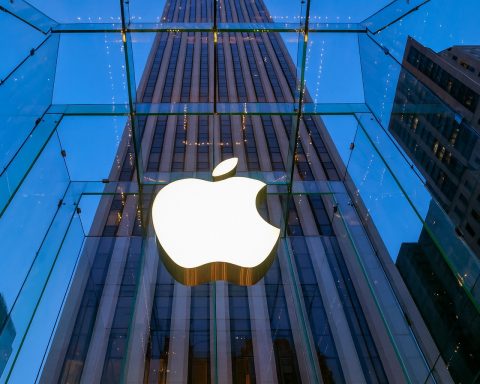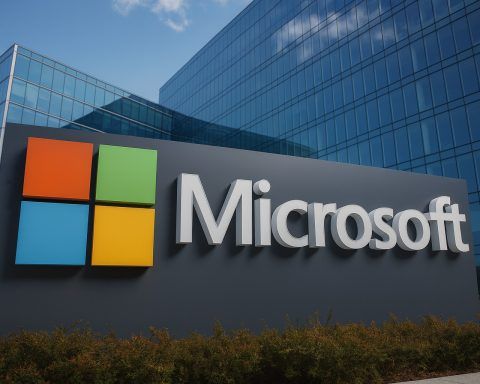Australia’s stock market closed sharply lower on Friday, 14 November 2025, as the S&P/ASX 200 tumbled 1.36% to 8,634.5, its lowest close in around four months. [1]
Roughly $37 billion in market value was erased as investors dumped growth and tech names, repriced expectations for interest rate cuts, and digested a surprisingly strong jobs report that has effectively killed hopes of more Reserve Bank of Australia (RBA) easing in the near term. [2]
Tech stocks led a broad-based sell-off, the big banks and major miners were hit hard, and only the energy sector managed to finish in positive territory. A spectacular 32% plunge in TPG Telecom – largely a mechanical move as the stock traded ex‑dividend and ex a massive capital return – headlined a day that wiped out the market’s gains of the last few months. [3]
Market snapshot: ASX 200 slides to a four‑month low
At the close of trade in Sydney on Friday:
- S&P/ASX 200: 8,634.5, ‑1.36% (‑118.9 points)
- All Ordinaries: 8,907.0, ‑1.41%
- Small Ordinaries: 3,652.2, ‑1.74%
- All Tech Index: 3,592.5, ‑2.75% [4]
According to evening wrap data, the index finished just a quarter of a percent above its intraday low, underscoring how little buying interest emerged into the close. [5]
For the week, the ASX 200 fell about 1.5%, extending its losing run to a third straight week and leaving the benchmark roughly 5% below its 21 October record high. [6]
Volatility also picked up. The S&P/ASX 200 VIX – the local “fear index” – jumped more than 10% to around 13, echoing a spike in US volatility gauges. [7]
Market breadth was weak:
- On the broader exchange, decliners outnumbered gainers by more than 2.5 to 1, with over 800 stocks down and just over 300 up. [8]
- In the ASX 200, more than 80% of constituents finished in the red, with only a handful of defensives and energy names providing any support. [9]
Why Australian shares fell today
1. Wall Street’s tech sell‑off set the tone
Thursday night’s session on Wall Street was ugly for growth and technology stocks:
- The S&P 500 fell about 1.7%, while the Nasdaq slid more than 2%, driven by profit‑taking in high‑multiple tech names and ongoing uncertainty over the US Federal Reserve’s interest‑rate path. [10]
Australian tech names often trade as leveraged proxies on global risk appetite and the US AI theme, so the overnight rout set up a weak open for the ASX 200 and triggered heavy follow‑through selling during local trade.
2. A “rate cut reality check” after strong jobs data
The local macro backdrop added fuel to the fire. Fresh labour‑market data for October showed:
- Unemployment falling to 4.3% from 4.5%
- Employment rising by around 42,000 jobs, with a strong lift in full‑time positions
- Participation holding steady at a high 67% [11]
That strength has sharply reduced the odds of further RBA rate cuts:
- The RBA left the cash rate on hold at 3.60% at its November meeting. [12]
- Following the jobs surprise, major banks – including NAB and Commonwealth Bank – have now pushed out or removed forecasts for additional cuts, warning that a tight labour market and sticky inflation leave little scope for more easing in this cycle. [13]
Friday’s sell‑off was widely described by local commentators as a “rate cut reality check”, as investors adjusted to the possibility of “higher for longer” interest rates, which particularly pressures long‑duration growth and tech stocks. [14]
3. Softer Chinese data and commodity jitters
Adding to the gloom, recent data out of China showed industrial production and retail sales growth slowing to their weakest pace in over a year, stoking concern about demand for commodities. TechStock²
That matters enormously for the ASX, given the market’s heavy exposure to iron ore, coal, and base‑metal exporters. Miners and resource stocks duly underperformed, dragging the materials index lower despite a modestly firmer gold price over the week. TechStock²+1
Sector performance: tech wreck, banks bruised, energy barely in the green
Friday’s move was broad‑based, with 10 of 11 sectors finishing lower:
- Information Technology:‑4.42%
- Financials:‑1.86%
- Materials:‑1.43%
- Consumer Discretionary:‑1.30%
- Health Care:‑0.92%
- Real Estate:‑0.69%
- Communication Services:‑0.70%
- Industrials:‑0.68%
- Consumer Staples:‑0.16%
- Utilities:‑0.07%
- Energy:+0.20% (the only sector to finish higher) [15]
Technology: another brutal session for growth names
The Information Technology sector was the clear laggard, dropping more than 4% on the day and nearly 19% over the past month. [16]
Among the hardest‑hit names:
- Megaport (MP1): about ‑9.6%
- Weebit Nano (WBT): about ‑8.6%
- Catapult Sports (CAT): around ‑7.8%
- Life360 (360): roughly ‑6.7%
- Xero (XRO): extended recent declines after a post‑earnings slide earlier in the week [17]
The move largely reflected a global de‑rating of high‑multiple tech and AI‑exposed stocks as investors reprice the path of interest rates and take profits in some of the market’s best performers of 2025. [18]
Financials: big banks feel the “higher for longer” heat
The financials index dropped almost 2%, with the big four banks under consistent pressure:
- Commonwealth Bank (CBA): down around 1.8% for the day and roughly 11% for the week, its sharpest weekly fall in about two years TechStock²+1
- ANZ, NAB and Westpac also finished in the red, with intraday losses in the 1.5–2.5% range as investors digested the implications of fewer rate cuts and tighter regulatory scrutiny. TechStock²+1
On the corporate news front:
- Westpac slipped after revealing it had back‑paid nearly 47,000 staff more than $50 million and signed an enforceable undertaking with the Fair Work Ombudsman over 11 years of underpayments. [19]
- QBE Insurance eased as the insurer announced its chair Mike Wilkins will retire next year, with director Yasmin Allen to step into the role. [20]
Materials and gold: caught between China worries and profit‑taking
The materials sector dropped about 1.4% as heavyweight miners declined: [21]
- BHP and Rio Tinto were down around 1–2% amid concerns about slowing Chinese industrial demand and mixed moves in iron ore prices. TechStock²+1
- Despite a firmer gold price earlier in the week, gold producers including Northern Star and Evolution Mining fell roughly 2–3% as traders locked in recent gains from the sector’s strong run. TechStock²+1
Real estate investment trusts: rate‑sensitive stocks under pressure
Rate‑sensitive property names also struggled. Over the week, the ASX 200 AREIT Index fell 2.58%, with notable losers including:
- HMC Capital: ‑6.1%
- Ingenia Communities: ‑5.9%
- Goodman Group: ‑4.6%
- Growthpoint Properties: about ‑3.8%
- HomeCo Daily Needs REIT: ‑3.3% [22]
Rising bond yields and the fading prospect of further RBA easing tend to weigh on REIT valuations, as investors reassess the relative appeal of property income versus safer fixed‑income returns. [23]
Energy: a rare bright spot
The energy sector was the only index component to finish higher, eking out a 0.2% gain:
- Santos: up about 1.2%
- Woodside Energy: up around 0.3% [24]
The move followed roughly a 2% jump in global oil prices after reports that a key Russian oil terminal at Novorossiysk had been severely damaged in a Ukrainian drone attack, raising fresh concerns about supply disruptions. [25]
Biggest movers: TPG’s “technical crash” and Droneshield’s rebound
TPG Telecom: down 32% – but the story is complicated
The most eye‑catching move of the day came from TPG Telecom (ASX: TPG), which plunged just over 32% and topped the decliners’ list on both the ASX 200 and ASX 300. [26]
However, the drop was mostly mechanical:
- TPG began trading ex‑dividend and ex a massive capital return on Friday.
- Shareholders have approved a ~$3 billion pro‑rata cash distribution of $1.61 per share, comprising a $1.52 capital reduction and a 9‑cent unfranked special dividend. [27]
- Once the entitlement to that payout detached, TPG’s share price adjusted lower by a similar amount.
In dollar terms, the roughly $1.60‑plus share‑price fall was broadly in line with the $1.61 per share distribution, meaning the move reflects an accounting adjustment rather than an overnight collapse in the company’s fundamentals. TechStock²+2FN Arena+2
Tech and growth names dominate the losers’ list
Beyond TPG, the biggest percentage losers in the ASX 300 captured the day’s central theme – growth and high‑beta stocks under pressure: [28]
- Megaport (MP1): ‑9.62%
- Weebit Nano (WBT): ‑8.63%
- Lotus Resources (LOT): ‑8.33%
- Hub24 (HUB): ‑7.98%
- Catapult Sports (CAT): ‑7.76%
- Silex Systems (SLX): ‑7.58%
From a narrative perspective, it was a classic risk‑off session: high‑valuation, momentum‑driven names bore the brunt of investors’ drive to cut exposure ahead of a potentially choppy end to the year. [29]
Gainers: pockets of resilience in energy, lithium and defensives
There were still a few bright spots:
- Immutep (IMM): +5.77%
- DroneShield (DRO): +3.56% – recovering some ground after a sharp fall earlier in the week
- Propel Funeral Partners (PFP): +2.12%
- Orica (ORI): +1.92%
- Karoon Energy (KAR): +1.84%
- Domino’s Pizza Enterprises (DMP): +1.49%
- Ebos Group (EBO): +1.29%
- Pilbara Minerals (PLS) and Liontown Resources (LTR) also eked out gains, helped by improving sentiment around lithium after a recent strategic deal and changes to China’s royalty regime. [30]
The tilt of the winners – skewed toward defensives, energy, and selected lithium names – underscored a broader rotation towards companies with more visible cashflows and specific structural tailwinds. [31]
Other notable ASX stories on 14 November 2025
Beyond the index‑level moves, several company‑specific developments caught investors’ attention:
- Virgin Australia (unlisted but watched via its bonds and upcoming IPO chatter) reaffirmed first‑half guidance but flagged slower capacity growth in the second half, prompting a modest share‑price dip in associated listed securities. [32]
- Westpac’s wage‑underpayment remediation, QBE’s planned board transition, and ongoing shareholder unrest at Webjet all fed into stock‑specific volatility, with Webjet down about 9% as a major activist investor agitated for board change. [33]
- In the background, deals such as TPG’s Vocus‑related capital return and ongoing corporate announcements in mining and infrastructure continued to shape the micro picture, even as the macro narrative dominated the day. [34]
What today’s rout means for Australian investors
Friday’s $37 billion wipeout and four‑month low for the ASX 200 mark a clear change in tone from the relentless grind higher earlier this year. [35]
A few big themes emerge from the Australian stock market today:
- Valuation risk is front and centre
High‑multiple tech, AI and growth names are most exposed when markets start to doubt the speed and scale of future rate cuts. The past month’s underperformance in the All Tech index shows how quickly sentiment can swing once the macro narrative shifts. [36] - Macro drives micro
Moves in US equities, Chinese data, and local jobs and inflation figures are directly shaping daily price action on the ASX. Strong domestic employment and a firm labour market are good news for the economy, but they also make it harder for the RBA to justify further easing – a key headwind for rate‑sensitive sectors. [37] - Defensives, cashflow and yield matter again
On a day when most of the market was deep in the red, companies with robust balance sheets, steadier earnings and essential‑service characteristics – from consumer staples to select infrastructure and energy names – held up relatively better. [38] - Corrections can create both opportunities and traps
With the ASX 200 now about 5% below its record high, some investors will see room for bargain‑hunting. Others will point to elevated volatility, uncertainties around the Fed and RBA, and lingering geopolitical risk as reasons to stay cautious. [39]
For anyone watching “ASX today” via Google News or Discover, the main takeaway is that macro narratives have turned more complicated:
- Inflation is still above target.
- The labour market is stronger than expected.
- The easy part of the interest‑rate cutting cycle may already be behind us. [40]
As always, this is general news and information, not financial advice. Investors should consider their own objectives, risk tolerance and time horizon, and seek guidance from a licensed adviser before making portfolio decisions.
What to watch next week
Looking ahead, several events could keep volatility elevated for Australian shares: [41]
- RBA minutes (Tuesday): Investors will comb through the minutes of the November meeting for clues on how worried policymakers are about sticky inflation and the stronger‑than‑expected jobs data.
- US Federal Reserve commentary and data: Any signals about the Fed’s next moves on rates will likely ripple directly through global risk assets and the ASX.
- Further Chinese economic releases and commodity prices: Given the ASX’s heavy weighting in miners, movements in iron ore, copper and energy prices – alongside Chinese growth indicators – remain crucial.
- Local AGM and corporate update season: Trading updates, capital‑management decisions (like TPG’s capital return) and boardroom developments will continue to drive stock‑specific swings.
For now, though, Friday 14 November 2025 will be remembered as the day when rate‑cut optimism collided head‑on with reality, and the Australian stock market paid the price.
References
1. www.marketindex.com.au, 2. www.sharecafe.com.au, 3. www.marketindex.com.au, 4. www.marketindex.com.au, 5. www.marketindex.com.au, 6. www.marketindex.com.au, 7. m.investing.com, 8. m.investing.com, 9. www.marketindex.com.au, 10. www.abc.net.au, 11. www.abs.gov.au, 12. www.nab.com.au, 13. www.sharecafe.com.au, 14. www.sharecafe.com.au, 15. www.marketindex.com.au, 16. www.marketindex.com.au, 17. www.marketindex.com.au, 18. www.sharecafe.com.au, 19. www.capitalbrief.com, 20. www.capitalbrief.com, 21. www.marketindex.com.au, 22. propertymarkets.news, 23. propertymarkets.news, 24. www.marketindex.com.au, 25. www.marketindex.com.au, 26. fnarena.com, 27. company-announcements.afr.com, 28. fnarena.com, 29. www.sharecafe.com.au, 30. fnarena.com, 31. www.marketindex.com.au, 32. www.capitalbrief.com, 33. www.abc.net.au, 34. company-announcements.afr.com, 35. smallcaps.com.au, 36. www.marketindex.com.au, 37. www.abc.net.au, 38. www.marketindex.com.au, 39. www.marketindex.com.au, 40. www.abs.gov.au, 41. smallcaps.com.au







